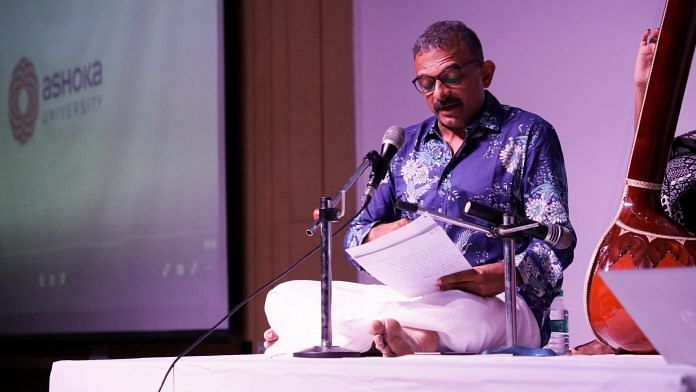Sonipat: Magsaysay awardee and renowned Carnatic musician T.M. Krishna took Ashokan edicts and wedded them to song Tuesday evening at a prestigious private university tucked away in Haryana’s Sonipat. The ambitious project was put together by Krishna and eminent historian Nayanjot Lahiri to rekindle public interest in Ashokan values.
Krishna stunned the audience with a musical rendition of Emperor Ashoka’s edicts, which were carved on rocks centuries ago. Through the production, Krishna evoked the iconic scene of the Kalinga war—marred by blood and a thirst for power, but at the same time, the emperor’s repentance and path to reform.
“Art is not an accident, art is deliberate and conscious,” says Krishna, who launched the second edition of The Edict Project in collaboration with Ashoka University. This was the first time the songs were attempted and it was especially difficult because, unlike other languages, Magadhian Prakrit—especially the one from the 3rd century BCE—has no reference point. “There is no one standard Prakrit, or as my daughter would say, there is no OG. It was a task to engage with the language and musicality,” said Krishna.
The near impossible feat had the singer going back and forth between his Prakrit notes, trying to place them in Ragas and failing several times. However, it turned out to be a musical marvel. Krishna launched the second edition of The Edict Project on the theme of Memory and Remembrance, delving deeper into Ashoka’s message and the place he holds in contemporary India.
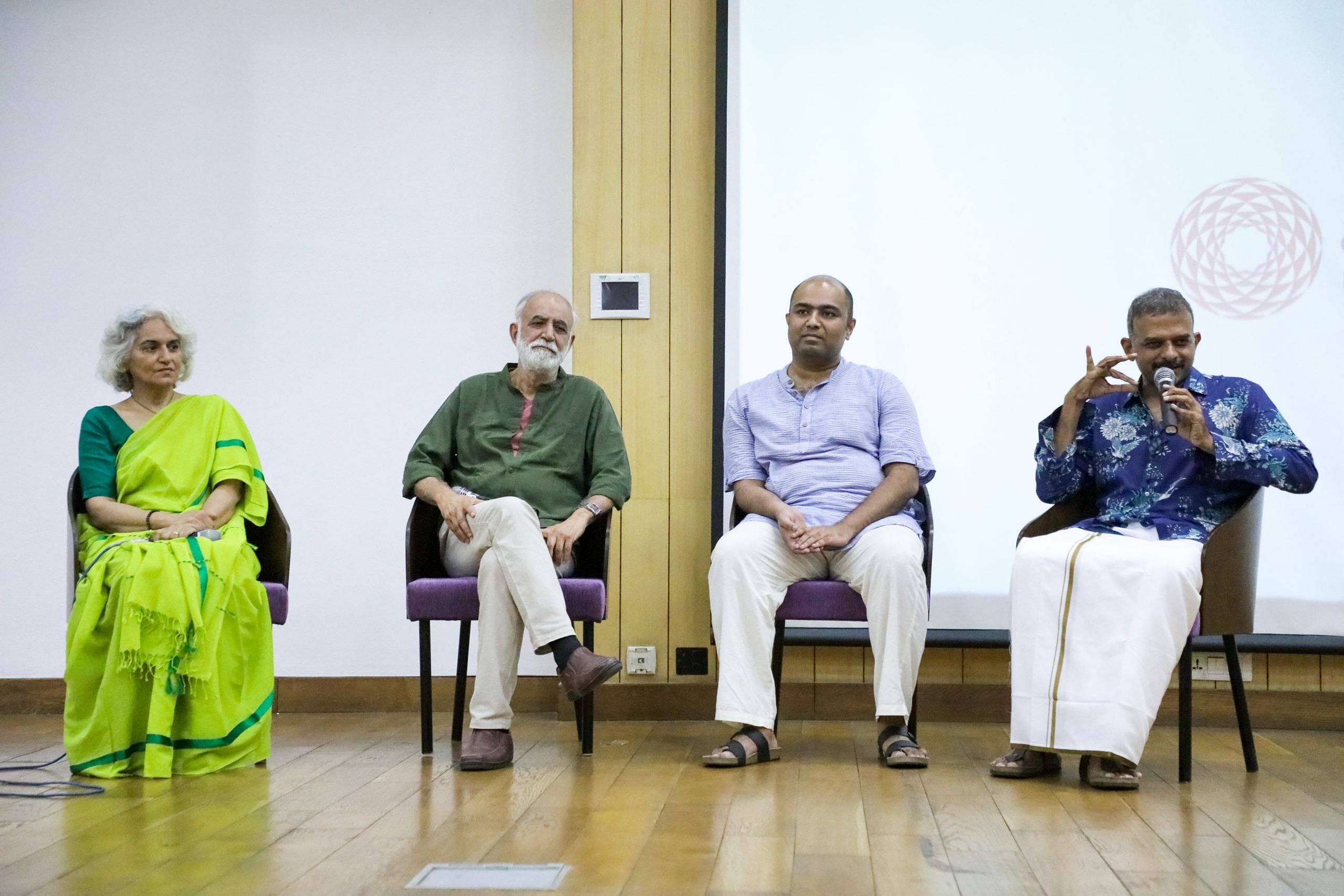
Also read: Buddhist Asia had a globalised script 1,000 yrs before the West. It spread from north India
Bringing Ashoka to life
This endeavour to revive the memory of Ashoka is coming at a time when many argue that Kautilya is at the heart of the political imagination of India today. “We live in a nation that is descending into the Kautiliyan idea of nation-state, based on the Kautiliyan model of statecraft, wherein individuals try their best to hold onto power. But the eras we live in are also starkly different, hence the ideas of governance also starkly vary,” said Lahiri.
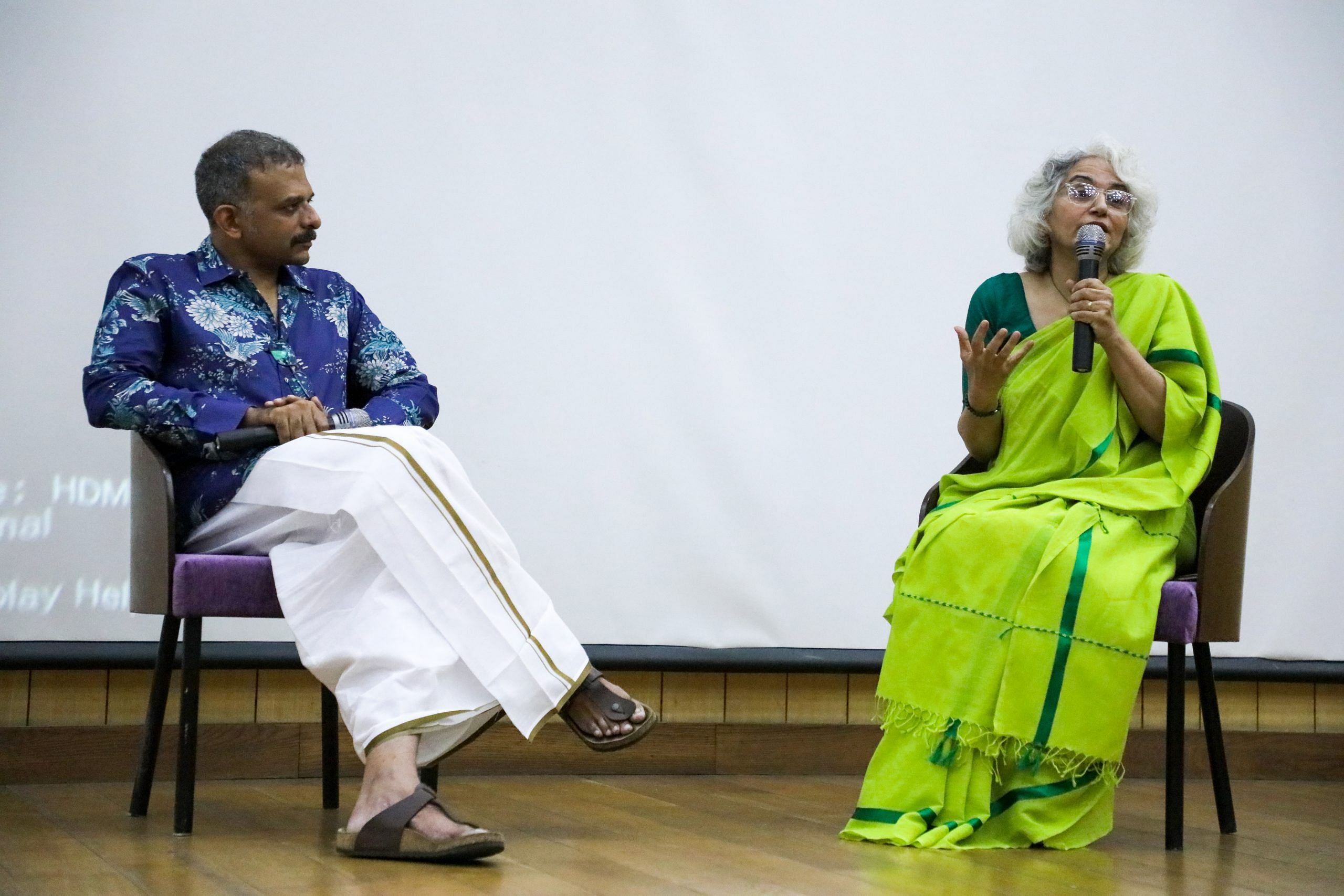
Ashoka was a monarch and his Dhamma carried political intent. But he still had a large standing army. Whereas modern India is a champion of democracy. Kautilya’s vision of statecraft did not shy away from bringing every facet of life under the king’s control. Even his policy of warfare lays down rigid principles meant to guarantee success, which sounds a lot like the Indian State of today.
But many have chosen to abandon the memory of this larger-than-life figure who used Dhamma as the social lubricant to hold society together. Ashoka is associated with pacifism today. They seek to approach Ashoka’s new phase in kingship after Kalinga with sensitivity and try to unearth the person behind the rock edicts. They view his edicts as an extraordinary democratic approach and see Ashoka after Kalinga as a person with a moral compass.
All eyes were on T.M. Krishna when he took to the stage wearing a mundu. A student from Ashoka accompanied him with a tanpura in hand. Naresh Kirti, professor of Sanskrit studies in Ashoka, joined the pair as he explained the meaning of the verses. The stage was set, lights were dimmed and as the student strummed the sitar, Krishna broke into song.
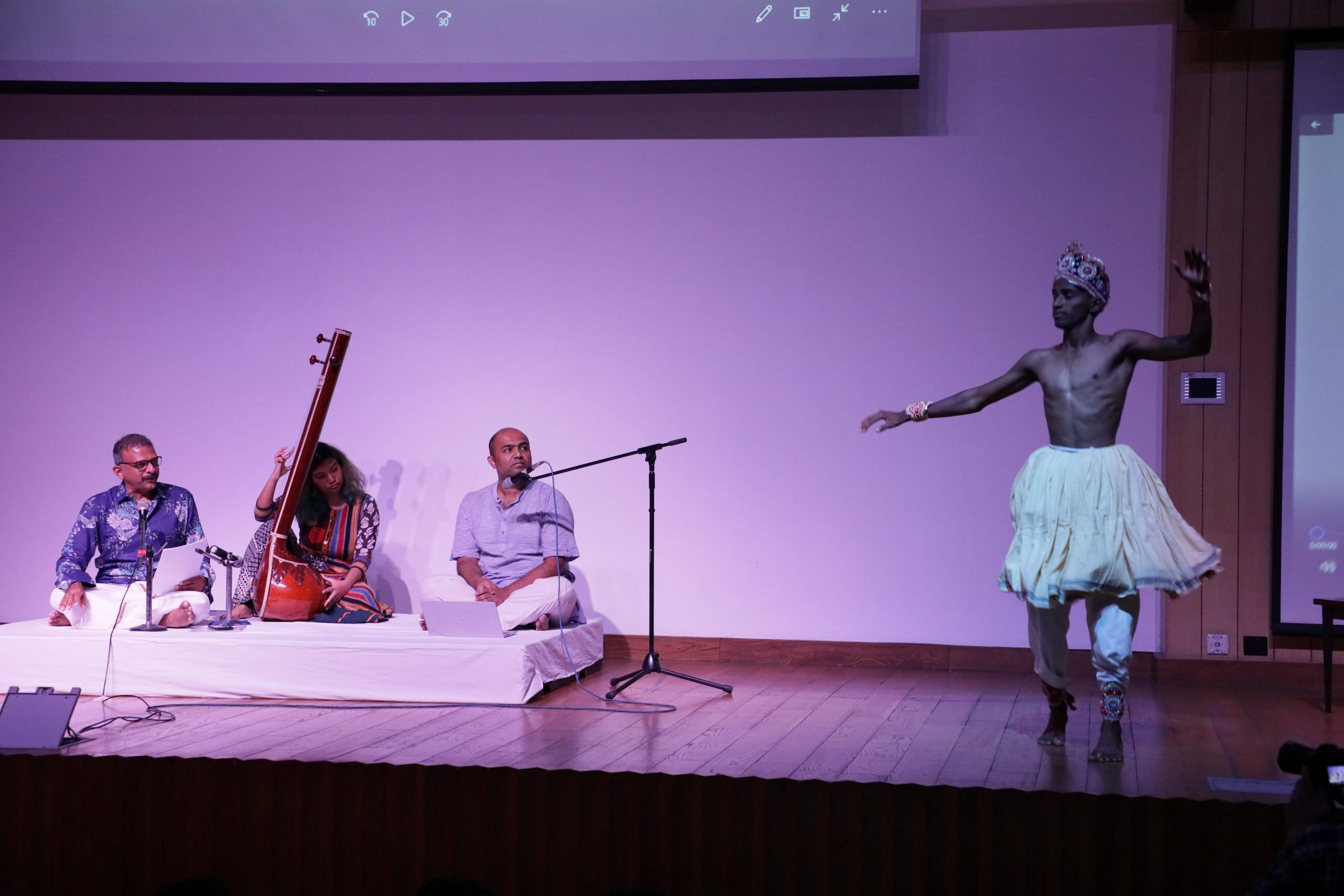
Naresh Kirti was not far behind as he delved into the meaning of the music. During an interaction, Krishna said that singing in Magadhian Prakrit did not come without its complications. But as he sang that evening, it was as if Prakrit came as naturally to him as any other language. A fellow student from Ashoka acted out the verses. As Kalinga was evoked in song, he took off his crown and clutched his hands in grief and repentance.
Also read: How India’s coastal Muslims helped it become wealthy, successful economy in medieval era
Exploring Ashokan ideals in modern times
When Krishna began imagining Ashoka, he imagined a king struck by grief. To him, Ashoka represented ideas of equality, fraternity and justice, as seen in the edicts he commissioned. Justice and truth formed the guiding force behind the emperor.
“These are ideals the country at large needs to think about,” remarked Krishna. The second edition of the project hoped to explore what people remembered of Ashoka and what he would’ve wanted people to remember him as. They take the emperor’s memory into account through his edicts.
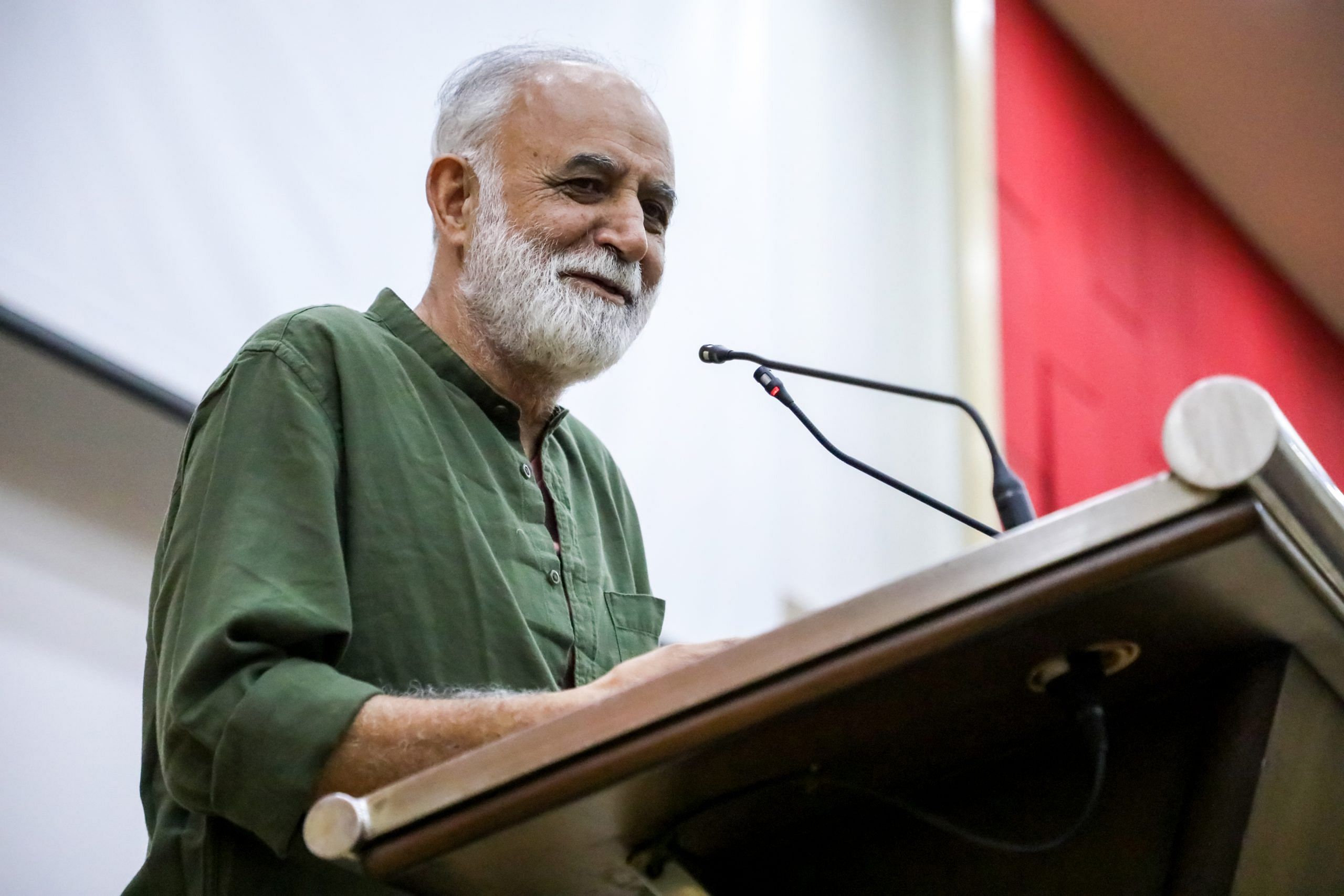
The first edition of the project was released in 2020. Krishna was discussing notions of equality and justice when he was told by former West Bengal governor and Ashoka professor Gopalkrishna Gandhi that he does not have to look too deep and start with Ashokan edicts.
This is when Krishna started to engage in conversations about the ruler and thought of committing his words to song. Krishna laughs about the process because how else was a cultural icon like him supposed to collaborate with an academic like Nayanjot Lahiri? Theirs was an unconventional pair, but what they had in common was Ashoka. Naresh Kirti’s name was recommended to him by a friend from Jerusalem. Kirti helped with the translations, enunciation, and pronunciation. They wanted Ashoka’s words to be seen as the gospel truth.
Lahiri says reconstructing the early life and early years of Ashoka’s reign was “quite tricky” because textual sources that remembered him came into existence several years after his passing. Historians only had epigraphic sources like edicts to rely upon. They try to lead an investigation into the past through this project.
The expansive production also featured a film by M.K. Raina, where two protagonists try to imagine what Kashmir would be like if Ashoka was the emperor today.

(Edited by Zoya Bhatti)


